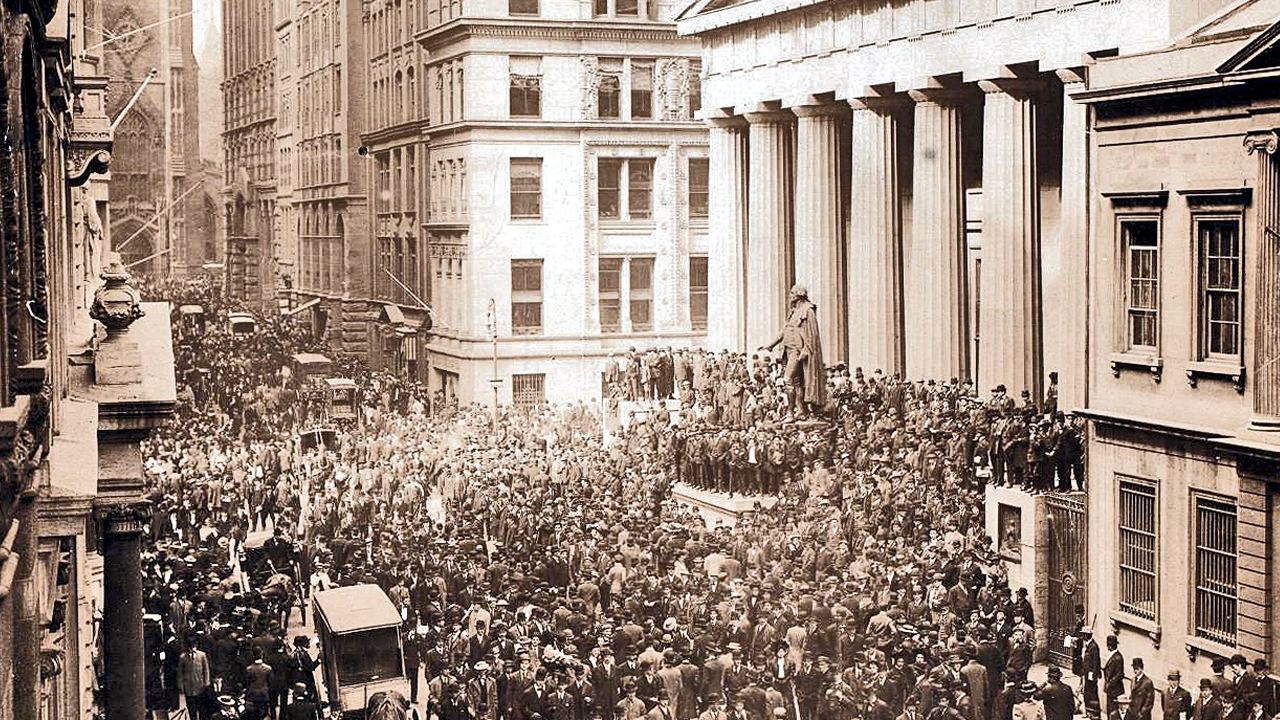Millenials and Their Progency
Experts predict the greatest transfer of wealth will occur in the next few years when the baby boomers will transfer over $30 trillion in wealth to their children, the Millennials, and post-millennial generations.
Notably, the Millennials have already started making the shift towards the use of unconventional banking, with Bitcoin BTC/USD posed to be the beneficiary of the ‘Great Wealth Transfer’ of our time.
It is now over ten decades down the line, and the cryptocurrency market is scaling higher now more than ever. Despite the cryptocurrency market recently surpassing $2 Trillion in market capitalization, there are still numerous questions concerning the future.
In the last year, the cryptocurrency market saw a tremendous surge that saw the price of many cryptocurrencies rise to an all-time high. The first half of 2021 has been seen as a breakthrough for bitcoin and other cryptocurrencies. Bitcoin, the oldest cryptocurrency in the market, rose to surpass the $60,000 mark rising by over 280%.
The latest Bitcoin bull run was significant in pushing crypto to mainstream investing. The increased price surge, accompanied by mounting institutional interest, highlighted how small portfolio holders are now more than ever interested in Bitcoin and other digital assets.
Bitcoin Adoption Reports
According to a report by Chainalysis, titled “The 2021 Global Crypto Adoption Index,” cryptocurrency adoption jumped over 880% in the last year. The report explained that P2P platforms are driving cryptocurrency usage across the globe as more people shift from fiat currencies to digital currencies.
A new study by Gallup, a Washington-based analytics firm, shows that many American adults investing in Bitcoin have tripled in the last three years. These individuals have more than $10,000 in traditional investment vehicles and are willing to invest these assets into Bitcoin. The number went from a 2% to a 6% portfolio allocation.
In the UK, more than half of young investors are actively trading in cryptocurrencies, with most crowning these assets as a ‘solid investments choice.’
Another report by Kraken dubbed “Inheriting USDs & Acquiring BTCs: How ‘The Great Wealth Transfer’ Will Fuel’ The Great Bitcoin Adoption” explained how millennials and Generation X consumptions and preferences would help drive the price of Bitcoin and other cryptocurrencies. The 16- paged documents explain that these generations have shown a high liking of digital money following the numerous challenges currently available in the traditional financial market.
A similar study suggests that 66% of millennials have more faith in the cryptocurrency market than in the traditional market. These generations are popularly known for wanting everything at their fingertips. It’s no shock to see them drawn to digital currencies. Notably, about 13% of those aged 18 and 49 now own Bitcoin, compared to 3% back in 2018.
Factors driving Bitcoin investment among Millennials and Gen X.
In addition to easy access, there are many reasons these generations are investing in Bitcoin or planning to invest their newly acquired wealth.
Firstly, Bitcoin provides high and quick returns compared to other investment assets in the market. Bitcoin has overperformed the market in the last year and managed to beat gold as the top asset class. This has been an attractive factor for this group of people who are highly ambitious in their activities.
Despite being a volatile asset, millennials still have faith in Bitcoin as a steady and stable asset compared to alternative currencies in the market. This year alone, Bitcoin rose by 78%, while some, like Cardano (ADA) tokens, have risen by over 1000%.
In addition, since many in the millennial and Gen X populations have lived through the housing crises and the most recent financial crises caused by the COVID 19 Pandemic, Bitcoin’s volatility and risk are not a major concern.
Lastly, it is also worth mentioning that their high ambition, accompanied by having time on their side (long way to retirement), these generations are willing to take the risk of investing in Bitcoin to see how it plays out.
So far, a few like the Winklevoss Twins have taken the bull by the horns and invested millions into the Bitcoin market.
Given the above factors, it is clear that more and more millennials and Gen X will pour money into the Bitcoin market. In the end, the cryptocurrency market will largely be dominated by members of these generations.
They say the past always repeats itself, it just changes color. What can the history teach us about the monetary shifts we’re seeing today?

While many Americans believe the U.S. Federal Reserve is the caretaker of the country’s monetary system, its also believed to be one of the worst financial institutions ever created. In 2022, amid a gloomy economy, war, and a number of global crises, the possibility of a great monetary shift has increased. The preceding years filled with panic, are very similar to the years that led to the creation of the Federal Reserve System.During the last few years, just before the onset of Covid-19, discussions about a “Green New Deal,” a “Great Reset,” and a “New Bretton Woods Moment” have increased a great deal. These topics have made people believe a great transition of wealth is taking place, and the consortium of modern central banking is bolstering the change. Many people wonder how these changes happen so fast, and why the public simply allows such transformative changes without question. The best way to understand such changes is to look at the great transition of wealth that took place in the late-1800s into the mid-1900s.
The first historical moment that took place back then was the creation of the Federal Reserve System. It is well documented that the Fed was born on December 23, 1913, after president Woodrow Wilson signed the Federal Reserve Act, but the central bank’s inception started years before Wilson’s Act. What most people don’t know is that J.P. Morgan and the “Money Trust” or the “House of Morgan” helped fuel the creation of an American central bank. None of the evidence is hidden from the public as the Pujo Committee, a congressional subcommittee that operated from 1912–1913 investigated the group in great detail.
In the late 1800s, Americans grew untrustful of banks as a financial cartel had formed that used American deposits for bucket shops and proposition bets. Financial manipulation was growing wildly and in 1896, Morgan created the Morgan-Guarantee Company. Over the next decade up until the summer of 1907, the U.S. economy was extremely volatile. While the ‘Panic of 1907’ or the ‘Knickerbocker Panic’ is well known in history. There were earlier panics and bank runs in America in 1873 and 1893. Morgan and his friends reportedly monopolized a great deal of businesses, and more specifically Morgan controlled close to half of the country’s railroads.
Tim Sablik and Gary Richardson from the Fed’s Bank of Richmond branch explain that the “Panic of 1873 arose from investments in railroads.” That summer in 1907, the U.S. economic system broke and a large swathe of financial institutions and corporations went bankrupt. The biggest failures stemmed from Westinghouse Electric Company and Knickerbocker Trust in New York City. Richardson and Sablik noted that the Panic of 1884 derived from two major New York City financial firms failing. Both of the bank’s owners made “speculative investments” and Marine National Bank and Grant and Ward went bust.

The U.S. Treasury tried to save the day in 1907 by funneling millions of dollars into failing financial institutions. While liquidity was horrid for American banking customers and depositors, a number of businesses and banks created cash substitutes. After the Treasury attempt and cash substitutes did not work, J.P. Morgan stepped in to fix the situation. Morgan and America’s leading finance men channeled lots of money into weak banks with help from the government and the country’s business leaders.
3 Financial Crises, Jekyll Island, and the Aldrich Plan — Are Panics and Crises Preceding Today’s Monetary Shift?
The three financial crises (1873, 1893, 1907) led a majority of Americans to believe the United States banking system was officially corrupt. After the Panic of 1907, bureaucrats in collusion with a number of U.S. business leaders, convinced the public the banking system needed reform. After all, the public was fed up with banks spending their deposits on speculative investments and bucket shops, and they were growing tired of bank runs. U.S. politicians then moved toward strict regulatory reform and Congress introduced stop-gap legislation and the National Monetary Commission.
The Aldrich-Vreeland Act (1908) allowed U.S. bankers to start national currency associations, in the event a national emergency of liquidity arose. The initiation of the Federal Reserve was sparked by the liquidity crises mentioned above, and through the Aldrich-Vreeland Act, banknotes were backed by the institution’s securities and government bonds. Government library documents further show the Panic of 1907 “made people want a powerful central bank that could ‘protect’ the common man from the ‘abuses of the Wall Street bankers.’”
Similar to the recent economic calamities America is facing today, with Covid-19 lockdowns and the disruptions from the war in Europe, the previous financial crises in 1873, 1893, and 1907 invoked one of the largest monetary shifts in history. While most Americans are taught in high school that the Fed’s system manages the money and credit throughout the country, G. Edward Griffin’s 600-page book “The Creature from Jekyll Island” paints a different story. It explains how the “House of Morgan” and a favorable U.S. president colluded to create the U.S. central bank.
A descendent of the Rockefellers, Nelson Aldrich was also instrumental in the secret meeting at the Jekyll Island Hunt Club in Georgia. The Federal Reserve System was crafted by Morgan’s ‘Money Trust,’ select politicians, and Nelson’s foundational design called the “Aldrich Plan.” In recent times, descendants of the Rockefellers from the Rockefeller Foundation have been accused of designing plans called “lock step” in 2010, which is eerily similar to the Covid-19 lockdowns that happened ten years later. The New York-based philanthropy report discusses how governments could control an influenza-like pandemic through lockdown measures.
While Wilson’s December 23, 1913 signing is well documented, most Americans don’t know about the secret meeting held on Jekyll Island in 1910. History teachers and school books do not discuss the years before the Fed was created. But those who do know about how the Fed started and hold the belief that it continues to manipulate the free market, want the central bank abolished. “The Fed has become an accomplice in the support of totalitarian regimes throughout the world,” Griffin writes in his Jekyll Island book published in 1994.
The previous years that led to the consortium of modern central banking and the Fed are very similar to today’s economic crises, and it’s safe to say panic fuels these changes. If a great transition of wealth is taking place today, the signs show a transformative outcome, planned years ago, may very well be on the horizon. It’s uncertain what the monetary shift will look like, but looking back at history and things like the creation of the Federal Reserve system, clearly shows that certain people are likely to benefit more than others.
Disclaimer: Although the material contained in this website was prepared based on information from public and private sources that TELcrush.com believes to be reliable, no representation, warranty or undertaking, stated or implied, is given as to the accuracy of the information contained herein, and TELcrush.com expressly disclaims any liability for the accuracy and completeness of the information contained in this website.

